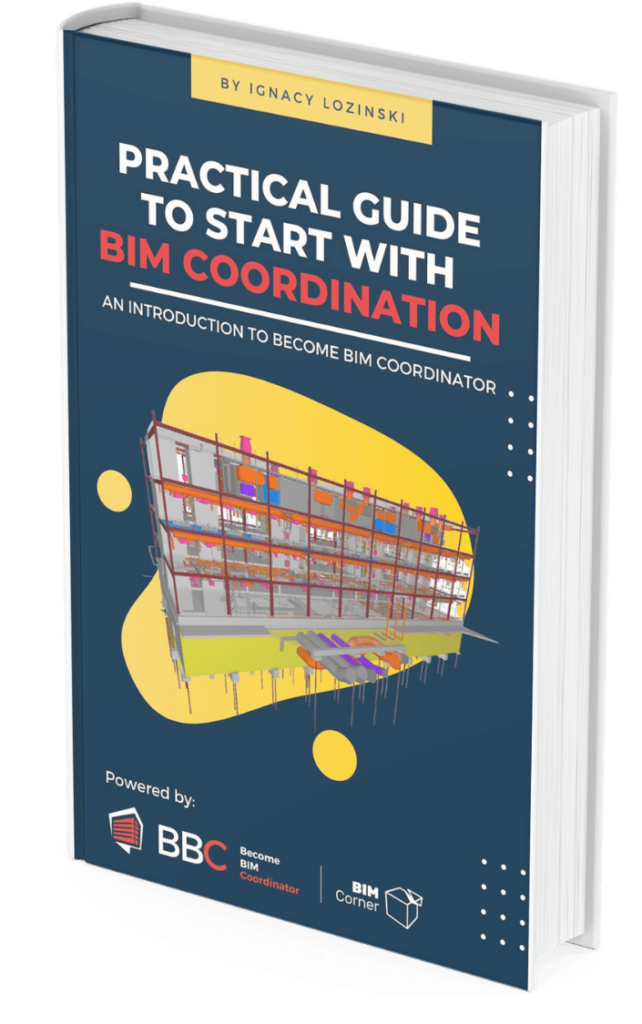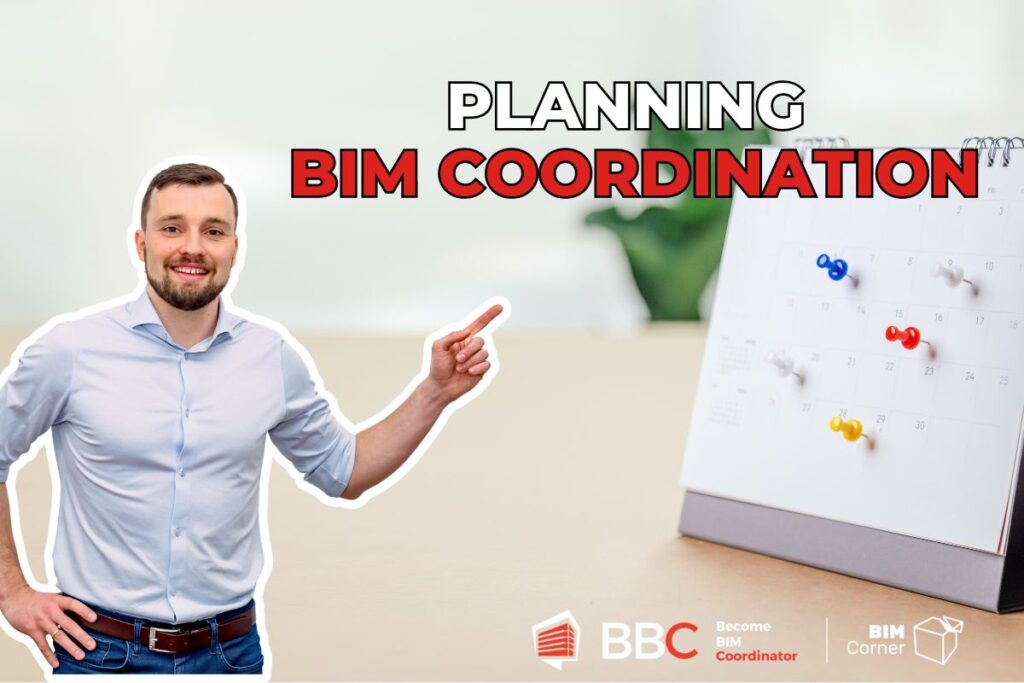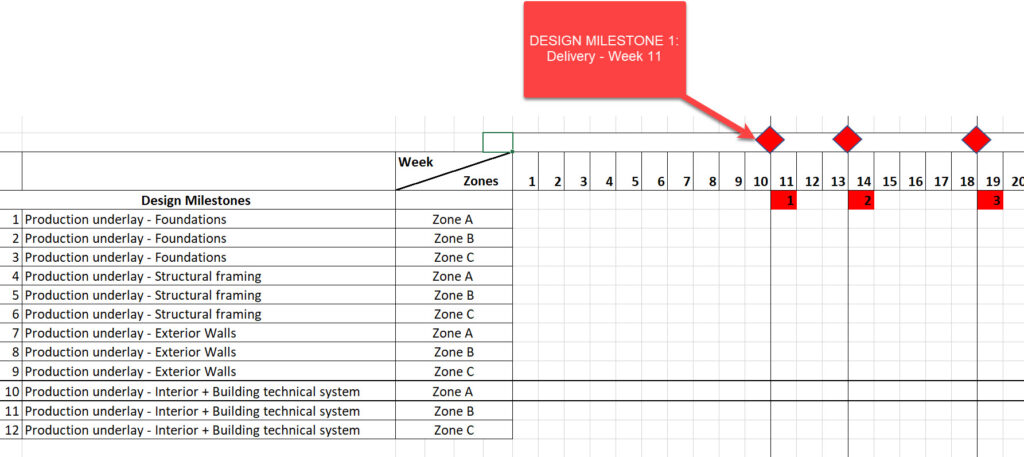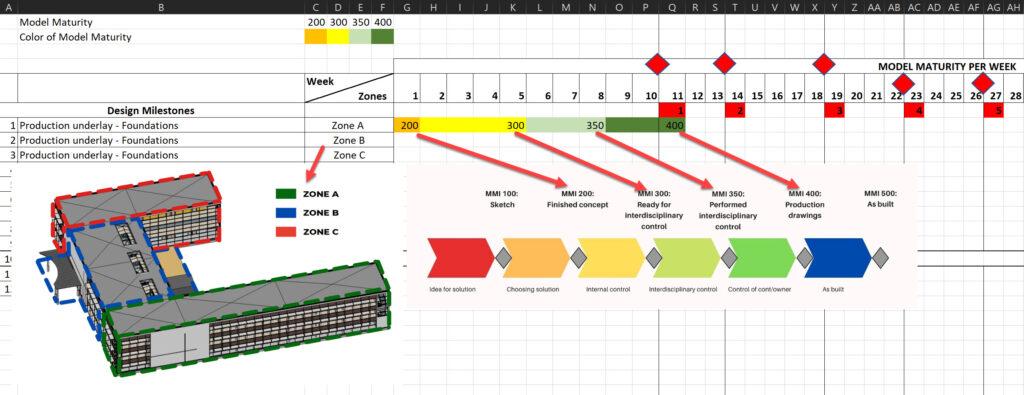Years ago, on a major construction project in Norway, I stumbled into a common pitfall as a BIM Coordinator.
My mistake?
I conduct BIM coordination on BIM federated models without a plan.
What do you think happened? 👇
Picture this...
I was fresh in my role. Working on one of the biggest construction projects in Nordic countries.
Often I had to sit for long hours going through hundreds of coordination issues. I was unsure if I was on the right track.
- I was frustrated that the disciplines weren’t resolving the issues I forwarded to them.
- Instead of decreasing, the number of issues increased each week.
- This caused tension in the team, as we couldn’t see real progress on the project.
The breaking point came when I realized my random approach was a complete time-waster. I began planning more thoroughly, determining which models to check and when.
This strategic shift quickly improved the situation.
Things started to get better.

Would you like to learn more about BIM COORDINATION? JOIN AN ONLINE PROGRAM TO BOOST YOUR SKILLS
Don't Let Chaos Rule Your BIM Coordination
Trust me.
If you’re coordinating BIM models without a plan, you’re setting yourself up for trouble. Period.
Why is planning essential?
Without it, you and your team end up overworked, wasting time on issues that may not even matter in the long run. Checking immature BIM models leads to unnecessary clashes, especially when design decisions are still in flux.
Having a clear plan, when and what will be checked brings many benefits:
- You’re not wasting time going through hundreds of issues,
- You’re more aware of which parts of the project require improved coordination and attention,
- You have better control over which discipline needs your support and expertise,
- Your coordination workflow is more effective, helping you identify priority issues faster.
Now, let’s get practical.
Here are a few steps that you should take to make your coordination workflow more organized.👇

DOWNLOAD BIM COORDINATION GUIDE
Subscribe to our list and download Practical Guide to start with BIM Coordination.
Interactive BIM Coordination guide full of tips, graphs, mind maps, and practical exercises.
It will teach you the basics of BIM Coordination. All for free.
#1. Use Project Milestones to Set Deadlines
Why?
Project milestones align with the maturity of your model and indicate when certain project parts are delivered.
In general, when we approach project milestones, the model is mature enough and most of the design solutions have already been chosen and incorporated into the model.
- Discuss Project Milestones: Engage with your project manager to create a comprehensive schedule that highlights significant project milestones.
Understand the delivery dates and the corresponding parts of the project for each milestone. - Create a Plan: Armed with milestone dates, carve out a detailed plan outlining when and what parts of the project you’ll coordinate. This ensures that your coordination efforts align seamlessly with the project’s overall timeline.
Simplified version, how it can look.👇
#2. Use Pull Planning for Precise Coordination Timing
Pull planning offers a strategic approach, ensuring you hit your milestone dates without unnecessary delays.
What I recommend here is:
- Learn Pull Planning Basics: Familiarize yourself with the fundamentals of pull planning. Resources like the Last Planner System can provide valuable insights. Check the link below:
👉 Learn more about pull planning
- Determine Coordination Duration: Set a realistic duration for your coordination process, considering factors like project complexity and the number of disciplines involved. Often it can take from a few days to a few weeks.
- Integrate into the Plan: Once you’ve determined the duration, add it to the coordination timeline.
#3 Use model development level, to have better control over maturity of the model.
There are several methods to determine the maturity of our model, including LOD, LOIN, LOI, MMI (Model Maturity Index), and others.
It actually doesn’t matter so much which one you are going to choose, but….
…you need an indicator, that will indicate, what is the state of disciplinary model.
With this indicator in place, we can assume if the model is prepared for the coordination process.
- Choose a Maturity Indicator: Select an indicator, that will determine when a model is ready for coordination.
One of such indicators is Model Maturity Index (MMI),
For instance, MMI 350 defines that a model is ready for multidisciplinary coordination.
You can learn more about it here:
👉 More about MMI
- Set Maturity Milestones: Using pull planning, establish dates when the model should reach each maturity level, aligning with the overarching project milestones.
- Present and Refine the Plan: Share your plan with team members and project managers, encouraging open discussion. Adjust the plan based on insights and feedback, ensuring it aligns with the feasibility of the project.
Most likely, such a meeting will reveal the bottlenecks in your plan, which is beneficial.
The design team needs to understand your expectations. Their feedback will be invaluable. Adjust your initial plan based on the insights provided by different disciplines and the project manager.
In doing so, your plan will become more realistic and achievable.
Simplified version, how it can look.👇
Summing up
If I had known all of these a few years ago, it would have saved me a lot of headaches, tears, and unnecessary stress.
In the words of Abraham Lincoln:
“Give me six hours to chop down a tree, and I will spend the first four sharpening the axe.”
Apply this wisdom to your coordination work, and you’ll be better prepared than 90% of BIM Coordinators out there.
Now, go and plan!










